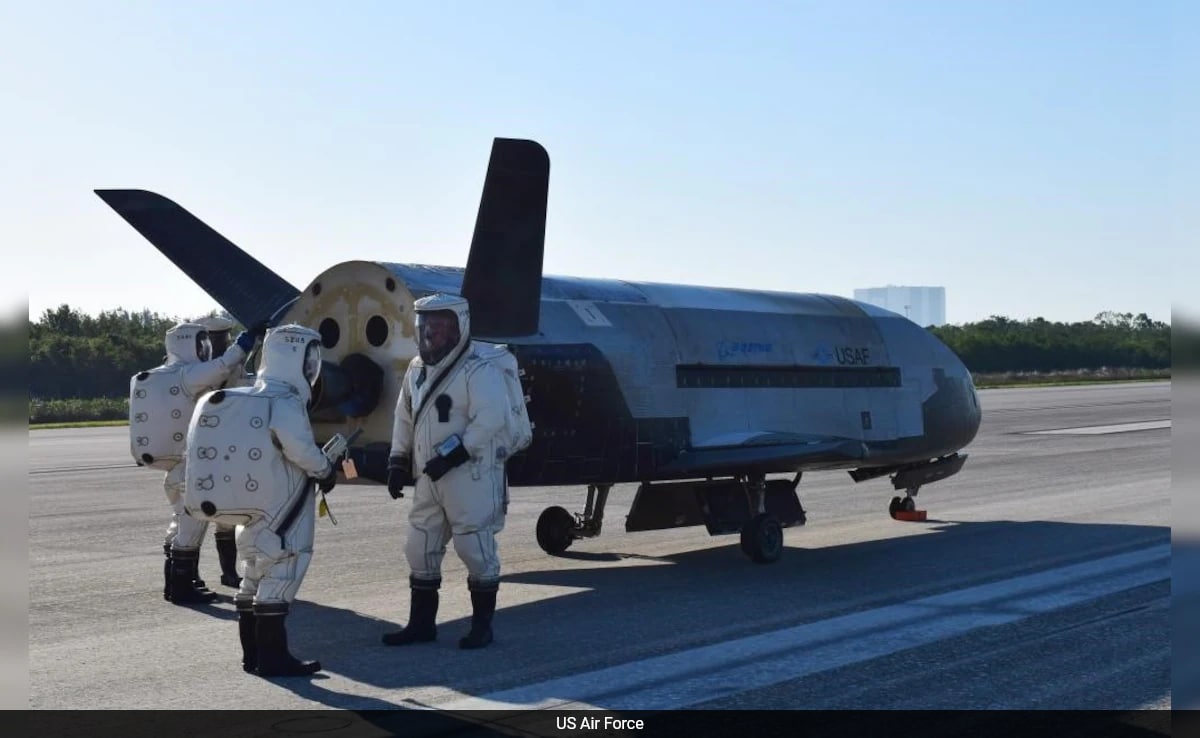The spaceplane resembles a miniature NASA space shuttle.
The Falcon Heavy rocket of SpaceX, the company owned by billionaire Elon Musk, on Thursday launched a US military plane that has generated a lot of interest among the space community in recent years. The X-37B has gone to space without any crew and will carry out cutting-edge research, according to CNN. It is not known exactly where the spaceplane is going. The secretive plane has already spent 3,774 days in orbit across six prior missions, with the last one lasting a record 908 days.
What is known about X-37B?
The plane has always been under a veil of secrecy. With Thursday's launch, the X-37B has been to the space for seven times.
The spaceplane resembles a miniature NASA space shuttle with the windows blacked out. The X-37B has been known to carry out research on concepts such as relaying solar energy from space for use back on Earth and studying the effects of radiation on seeds used to grow food, according to CNN.
The launch came two weeks after China's own robot spaceplane, known as the Shenlong, or "Divine Dragon", was launched on its third mission to orbit since 2020, according to news agency Reuters.
The X-37B has been built by Boeing and is roughly the size of a small bus. At the end of its mission, the craft descends back through the atmosphere to land on a runway much like an airplane.
What does the use of Falcon Heavy rocket signify?
Paul Graziani, CEO of COMSPOC, a company dedicated to tracking objects in space, told CNN that the use of one of the most powerful rockets in the world could mean the spaceplane will take payloads farther in space.
"If the military doesn't want people to track the X-37B, the vehicle can be hidden in the glare of the sun or by various other means - including changing its position often," added Mr Graziani.
"I think it's one of the most interesting things that's happened in space in a long time, whatever it's going to do," said the expert.
There is speculation that the spaceplane is heading towards geosynchronous orbit, which lies about 22,400 miles (36,000 kilometres) from Earth.
What's on board the X-37B?
CNN said that US space agency NASA has sent research that aims to find ways to sustain astronauts on future deep-space missions. Called Seeds-2, it will "expose plant seeds to the harsh radiation environment of long-duration spaceflight" and build on research carried out on previous X-37B missions.
The ability to cultivate crops in space has major implications for keeping astronauts nourished during future long-term missions to the moon and Mars.
The planned duration of the latest X-37B mission was not made public, but it will presumably run until June 2026 or later, given the prevailing pattern of successively longer flights.






Leave a Reply